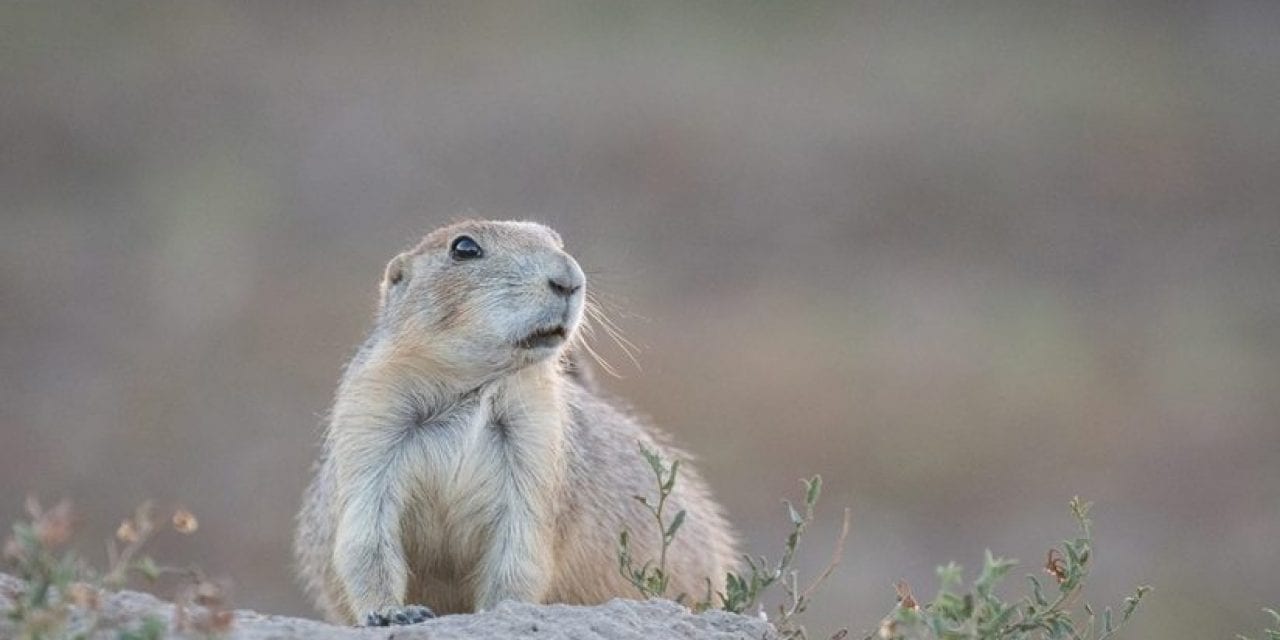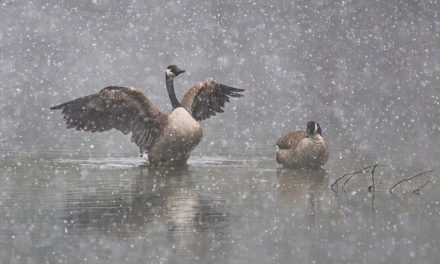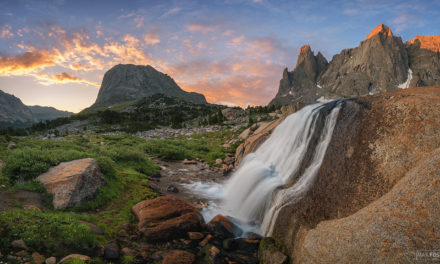“Prairie rats.” “A nuisance to farmers, ranchers, developers.” “Overpopulated.” Does the prairie dog really deserve this reputation?
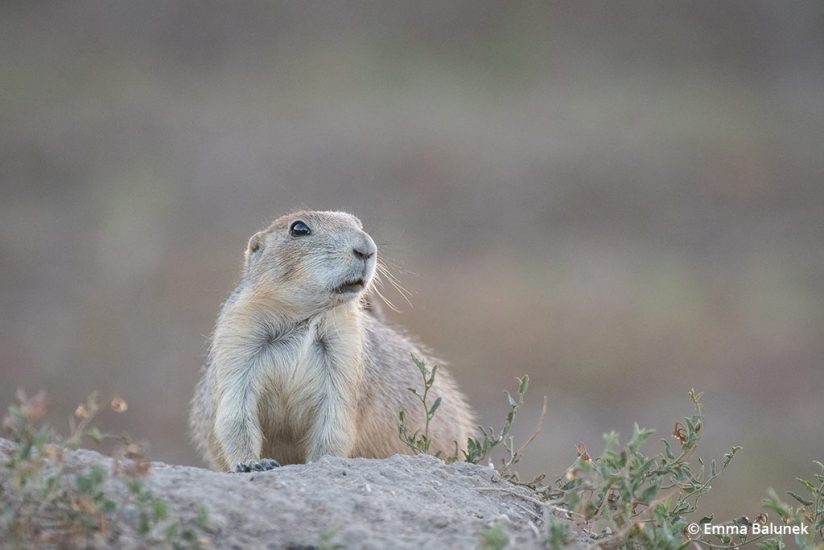
A prairie dog takes a strong stance on its burrow. This prairie dog’s colony was relocated out of the way of development in Fort Collins, Colorado.
These fluffy, charismatic animals play a complex and important role in the prairie ecosystem by providing food and creating unique habitat in the Great Plains of North America. Prairie dogs are a “keystone” species—one that is essential to the structure and function of an ecosystem. Without it, the ecosystem would most likely fail. Due to agriculture, ranching and urban expansion, about 98 percent of the prairie dog’s habitat, which stretches from Canada to Mexico, has been destroyed.
I moved west from Cleveland, Ohio, to Fort Collins, Colorado, to study ecosystem science and sustainability at Colorado State University. I discovered prairie dogs shortly after moving to Colorado and became completely fascinated by these creatures. I learned about the animosity toward them and decided to use photography to tell the story of the threats facing prairie dogs. I have spent hours in prairie dog colonies and assisted with a prairie dog relocation from a real estate development in Fort Collins to Cathy Fromme Natural Area. Here’s some of what I’ve learned.
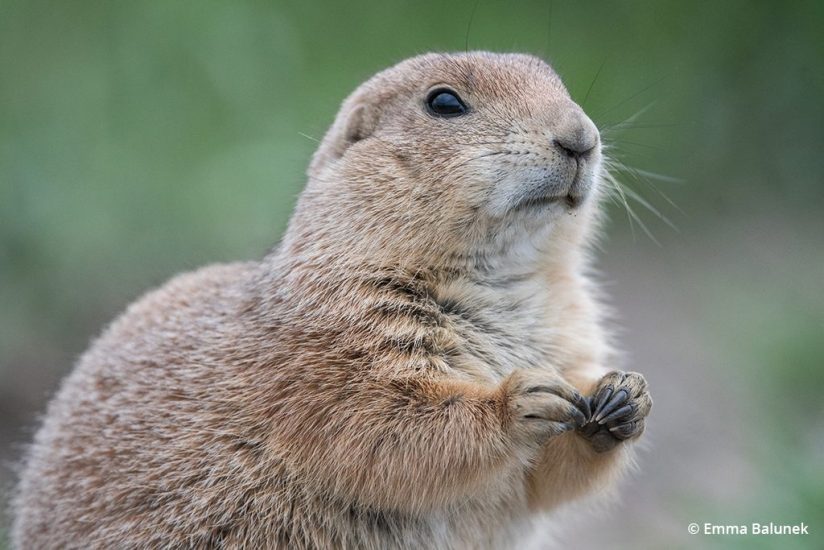
A prairie dog takes a break from grazing to check out his surroundings at Coyote Ridge Natural Area in Fort Collins, Colorado.
Prairie Dogs: A Keystone Species
More than 150 other species rely on prairie dogs in some way for food and shelter, including the endangered black-footed ferret, burrowing owl, ferruginous hawk, swift foxes, bison and mountain plovers.
The black-footed ferret, for example, is North America’s most endangered mammal. If prairie dogs are not protected, the charismatic and mysterious black-footed ferret will not survive because prairie dogs are the foundation of its diet. Prairie dogs are also a main component of the diet of the regal ferruginous hawk. These birds are “sit and wait” predators, patiently waiting outside of a prairie dog burrow to catch their next meal.
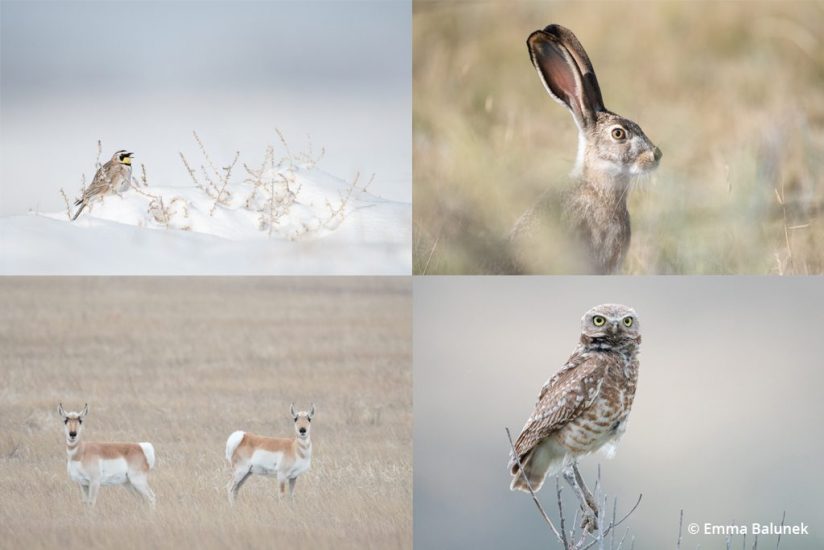
Over 150 species rely in some way on the prairie dog. Clockwise from top left: Horned lark, white-tailed jackrabbit, burrowing owl and pronghorn.
The petite yet powerful burrowing owl is another species that depends on prairie dogs, occupying prairie dog burrows to raise their young and returning to the same prairie dog colony year after year.
Swift foxes, the smallest wild dog in North America, weighing in at 5 pounds, prefer living in prairie dog towns because they provide a source of food and housing. Swift foxes will remodel old prairie dog burrows to make them suitable for raising their family. Swift fox populations are declining rapidly due to destruction of short-grass prairie habitat. Since prairie dogs and swift foxes share the same backyard, if prairie dog populations decline, so will the swift fox.
The majestic bison and other hooved mammals like pronghorn are attracted to prairie dog colonies because of the more nutritious grasses and forage that grow within the colonies versus outside of the colonies. Cattle also are attracted to the forage and grasses that grow on prairie dog colonies. Contrary to the misconception that prairie dogs eat all the grass and forage, prairie dogs and cattle only compete for grass during drought years. Otherwise, cattle and prairie dogs happily co-exist.
A Coral Reef In A Sea Of Grass
The interconnection between prairie dogs and the other wildlife of the Great Plains is not widely understood, and the undeserved reputation of prairie dogs as nuisance animals is hard to change.
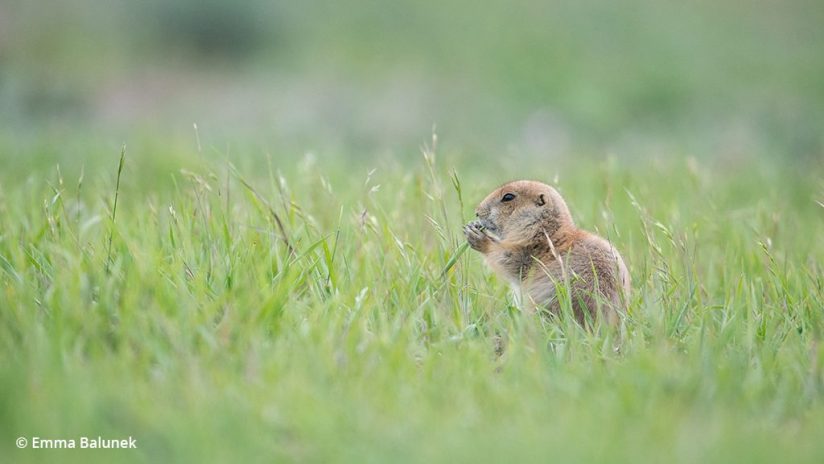
Prairie dog eating grass at Coyote Ridge Natural Area in Fort Collins, Colorado.
Prairie dogs create unique islands in a sea of grass, which attracts many species of wildlife. Grassland birds, like horned larks and meadowlarks, have been in decline due to destruction of suitable habitat, which includes prairie dog colonies. Some birds, like mountain plovers, need open grasslands for nesting, and prairie dog colonies provide the perfect spot. If prairie dogs are protected, millions of songbirds will have a better chance of survival because of the unique habitat prairie dogs create.
The Relocation Alternative For Prairie Dogs
Agriculture and ranching are important livelihoods in the Great Plains, but consideration should be given to a balance between agriculture and conservation. Urban expansion is rapidly pushing into the plains, especially in growing states like Colorado. Most prairie dogs are exterminated through methods like gassing, poisoning or being buried alive, and these methods have extremely low success rates. Typically, the next day after gassing or poisoning, most of the prairie dogs are still alive and suffering from exposure to toxins.
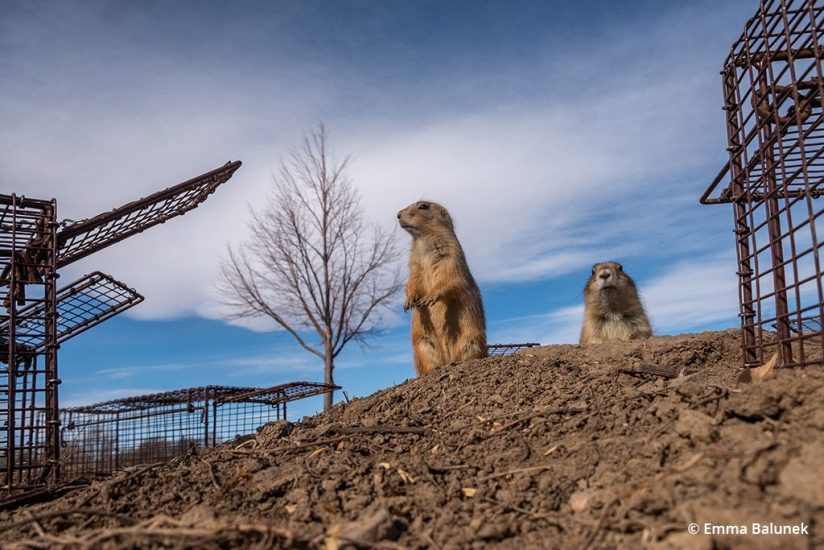
Two prairie dogs stand outside of their burrow surrounded by traps placed by the Humane Society of the United States’ Prairie Dog Coalition for relocation.
A much more successful alternative to extermination is relocation. Prairie dogs are trapped in live cages by professional biologists like the Humane Society’s Prairie Dog Coalition and released into a natural area or onto private land. Relocation keeps prairie dogs on the landscape in urban areas, and many people who live near prairie dogs enjoy watching them demonstrate their natural behavior—69 percent of Colorado residents polled were in favor of federal and state agencies establishing strict protections for prairie dogs on public land.
Urban prairie dog colonies are important for connecting people to wildlife and nature. Their colonies attract numerous interesting wildlife species that people enjoy watching. Children experience the prairie through visits to natural areas with their classmates or their families, which can give them an appreciation and greater understanding of the natural world. If prairie dogs were not in urban areas, residents would not get to view such a variety of wildlife, like burrowing owls and raptors, in their backyards.
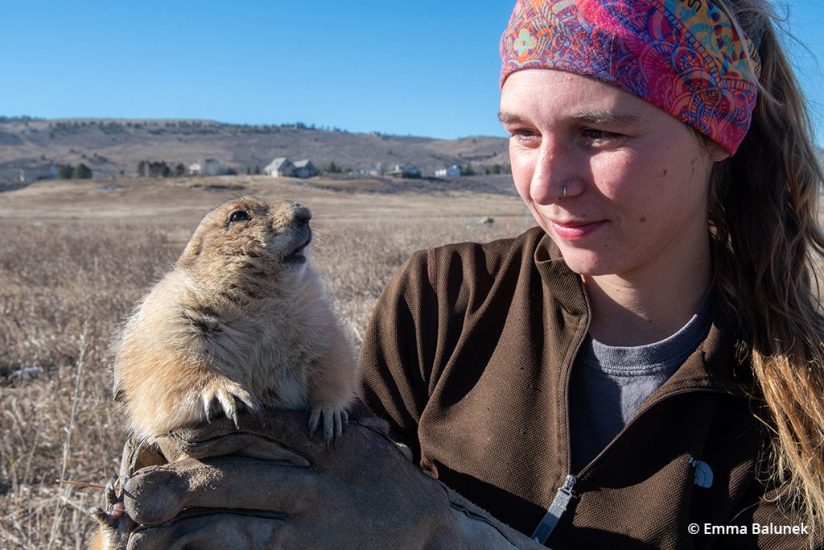
A prairie dog relocator from the Humane Society of the United States’ Prairie Dog Coalition holds a prairie dog right before it is released into its new burrow at Cathy Fromme Natural Area in Fort Collins, Colorado. This colony was moved out of the way of development in downtown Fort Collins.
Prairie Dog Society
Prairie dogs have remarkably complex social behavior and underground burrow systems and more varied communication than many people realize.
Their burrows provide protection against predators and weather. These small animals excavate different burrows for various activities, much like how humans use different rooms in their homes. Nursery burrows are used for the rearing of young, and burrows for sleeping contain one or two nest chambers packed with dry grass.
Their communication systems are also quite sophisticated, reflecting the ability to identify different predators and assess their threat level. When a predator is spotted, prairie dogs run to the nearest hole and then begin to give a loud, repetitious antipredator call to warn the others of a possible threat. Sonograms (graphical displays of sound) of the prairie dog antipredator calls indicate variations of duration, harshness, harmonics and number of syllables. A study conducted on Gunnison’s prairie dogs found that they have different alarm calls for different types of predators (coyotes, black-footed ferret, hawks), showing that they have the ability to recognize visual differences and communicate them within the colony.
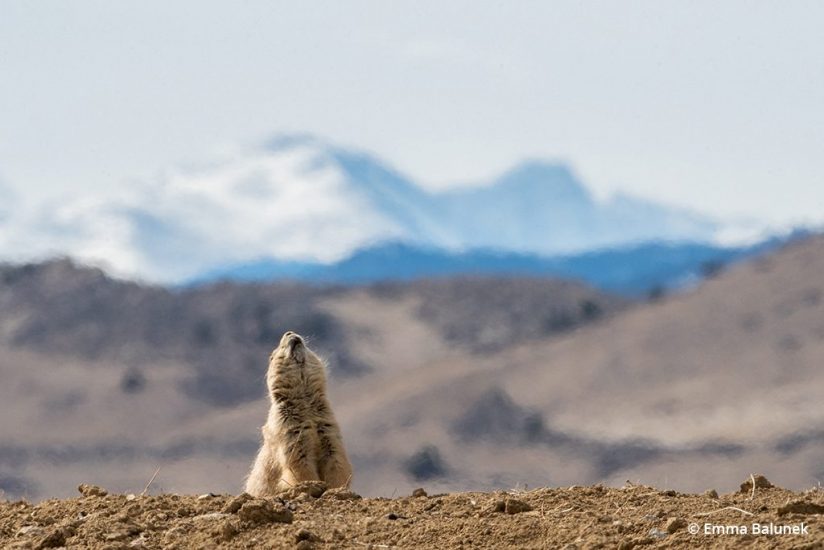
A prairie dog does a “jump-yip” at Colina Mariposa Natural Area in Fort Collins, Colorado, with the Rocky Mountains in the background.
The American Serengeti
One hundred and fifty years ago, the Great Plains were teeming with wildlife. It was referred to as the American Serengeti, where millions of bison roamed along with wild horses, wolves, coyotes, foxes—and millions of prairie dogs. The largest recorded prairie dog colony was in Texas and was 25,000 square miles, roughly the size of West Virginia. It was estimated to have nearly 400 million prairie dogs! Today large colonies are nearly non-existent because of the fragmentation of the landscape. The average prairie dog colony spans less than half a square mile.
An important step to conserve what is left of the wild ecosystem of the Great Plains is to protect the prairie dog. All of the associated species will have a better chance of survival if we can maintain a functioning ecosystem—with the help of the prairie dogs—for future generations.
See more of Emma Balunek’s work at emmabalunek.com and on Instagram @emmabalunek.
The post Guardians Of The Grassland appeared first on Outdoor Photographer.

